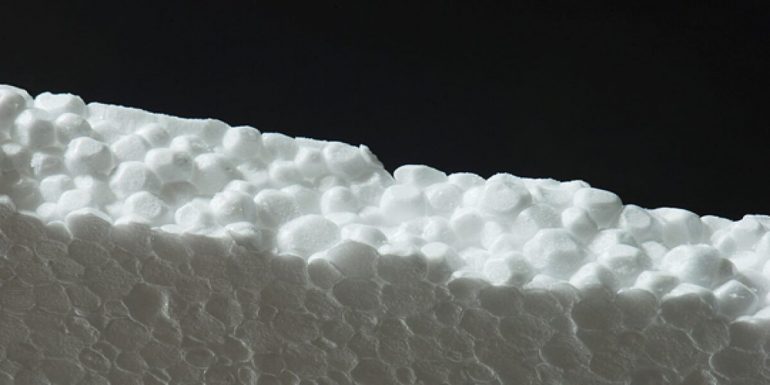We’re in the midst of an energy crisis and it’s affecting every single one of us.
The gas prices have doubled in the past month. And most homeowners are paying significantly more to keep their homes warm.
As a result, millions of homeowners across the UK are looking for alternative methods. To reduce their electricity bills, a big number have found their saving grace in affordable insulation.
The Importance of Upgrading Your Expanded Polystyrene Insulation
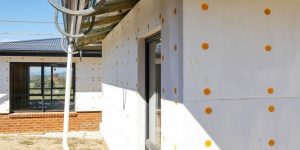
Most homes around the UK have insufficient insulation, and they didn’t even consider upgrading it until recently. This had to do with people thinking that upgrading the insulation of their homes comes at a significant cost.
Little do they know that there are quite a few insulation products that are affordable. But yet provide excellent results, such as fibreglass rolls, expanded polystyrene, foam boards in a variety of configurations, etc.
To help keep your energy bills low. All of these solutions you can use for a variety of purposes, including insulating walls, floors, ceilings, and so on.
The best part of all of this? You can do the installation yourself. I’ll focus on expanded polystyrene, as that’s arguably the most popular solution that many homeowners turned to in the past year.
But before we get into the specifics and benefits of expanded polystyrene, let’s discuss what it is, where to apply and how it performs when comparing other insulation solutions.
What is EPS?
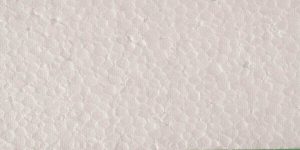
EPS or expanded polystyrene insulation is a low-cost insulation option that is great at retaining heat inside the home and is a very energy-efficient solution. It’s a rigid thermoplastic foam that has been in use for a wide range of insulation applications since the 50s.
It features a closed-cell structure, resulting in great thermal properties, low water vapour persistence, and is extremely impact-resistant.
When EPS uses in insulation applications, it comes in the form of blocks or boards, and it’s possible to install in roofs, walls, as well as floors in all residential and commercial settings.
How EPS Produces?
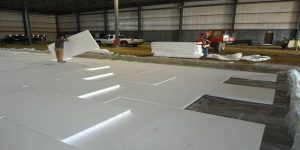
As its name implies, EPS produces using polystyrene beads in a couple of stages. The beads initially get a soft form with the use of steam and a blowing agent, most commonly pentane or hexane, which expands them by 30-40 times their original size.
Then, that product reaches to silos where it ages. Once it ages, the pre-foam product gets extra steaming before the beads fuse together into a single block. The block later dries in an oven and cuts to a different size and shape.
The properties of the end product vary based on the density and thickness of the board. Generally, when shopping for expanded polystyrene boards, you’ll notice the products have a number that represents their density.
For instance, you’ll find EPS 70 insulation boards, which are considered standard-density boards. Besides EPS 70 insulation boards, you’ll come across EPS 50 boards, which consider low density, and EPS 100 boards, which consider high-density.
There are also 150 and 200 EPS boards, but those boards are generally in use for large-scale projects that require ultra-high-density insulation.
EPS Applications
Expanded polystyrene insulation you can use in a wide array of insulating applications. You can use it in cavity wall insulation, concrete floor and general floor insulation, loft and attic applications, the insulation of piping, external walls, and so on.
Additionally, you can also use it in decorative tiles, vinyl siding, moldings, and more. This is due to its great structural rigidity properties that allow EPS to use even in laminated walkway applications.
Besides construction and insulation properties, EPS can be used in the packaging industry, as it features great shock-absorbing properties.
EPS Compared to Other Insulation Materials
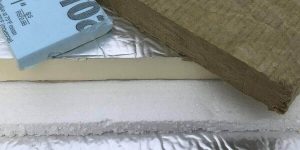
When you compare EPS to its closest counterpart – XPS (extruded polystyrene), EPS is both more affordable and retains less moisture.
On top of that, it features similar compressive strength. On the downside, it has a slightly lower thermal efficiency, although that can be compensated by getting a thicker and denser board.
When you compare EPS to more expensive solutions like PIR and PU boards, EPS features lower fire resistance, strength, and lower efficiency rating. However, PIR boards are two to three times more expensive, so the advantages are soon diminished.
Benefits of Expanded Polystyrene

As you can tell, expanded polystyrene is the insulation choice for a large portion of homeowners. As it comes with unique properties that make it energy-efficient and cost-worthy. Some of the benefits include:
1. Cost-Effectiveness
The expanded polystyrene insulation provides the best price to performance ratio from all insulation products available for commercial use.
For instance, in order to achieve the same thermal properties that you’d get from a PIR board. You’ll need an EPS board that comes at roughly half the price. That being said, if you’re working on a large-scale project, the savings can be significant.
2. Exceptional Thermal Properties
Speaking of thermal properties, expanded polystyrene insulation is second to none. Thanks to its closed-cell structure that consists of as much as 98% air.
The air in the cells is a poor heat conductor, and the thermal conductivity of a 70 EPS board in 10cm is 0.038W/mK (watts per meter times Kelvin), or the equivalent of a 3-meter solid brick wall.
3. Extremely Lightweight
Since EPS is comprised of mostly air, the boards and blocks are very light. Obviously, boards and blocks made in lower densities are lighter than those made in higher densities. Still, every EPS product is easy to work with, as it will be easy to transport, handle and apply.
4. High Durability
Expanded polystyrene can retain its form throughout the entire lifetime of the building. It doesn’t decompose like PIR boards do, for example. On top of that, it doesn’t attract pests or insects.
This is a direct result of its closed-cell structure that provides it with great rigidity and compressive strength, meeting all the relevant EU and UK construction standards. Its strength and durability increase proportionally with its thickness and density.
5. Moisture-Resistant Properties
The humidity generated inside your home can escape through EPS, meaning there won’t be any mold or mildew build-up.
Furthermore, outdoor water absorption is all but eliminated thanks to the closed-cell structure and permeable film facers, so your walls will be dry throughout the year, and we all know how important this is in the UK.

